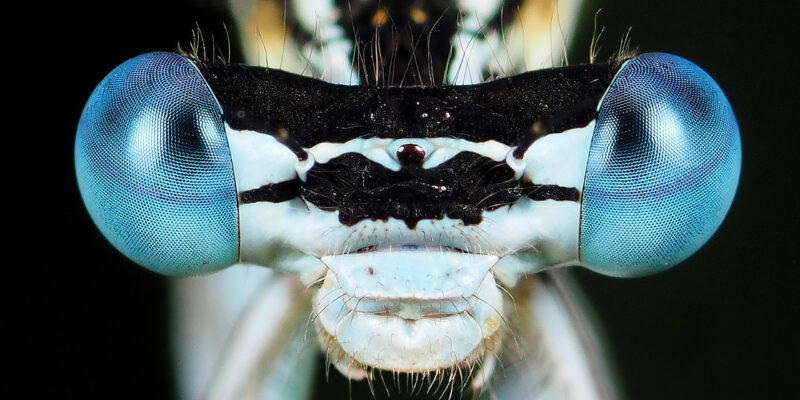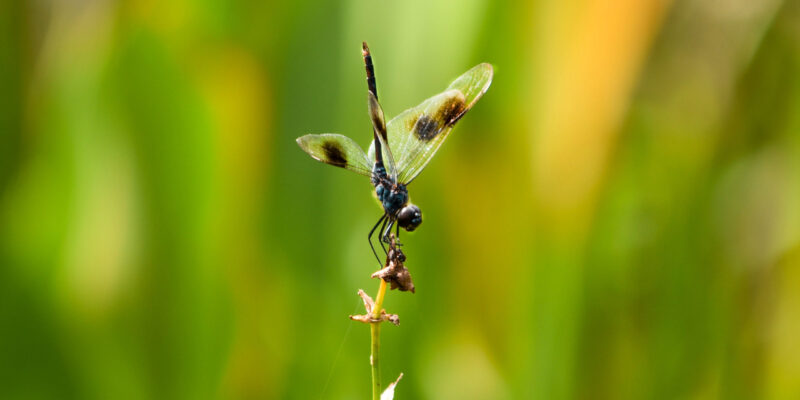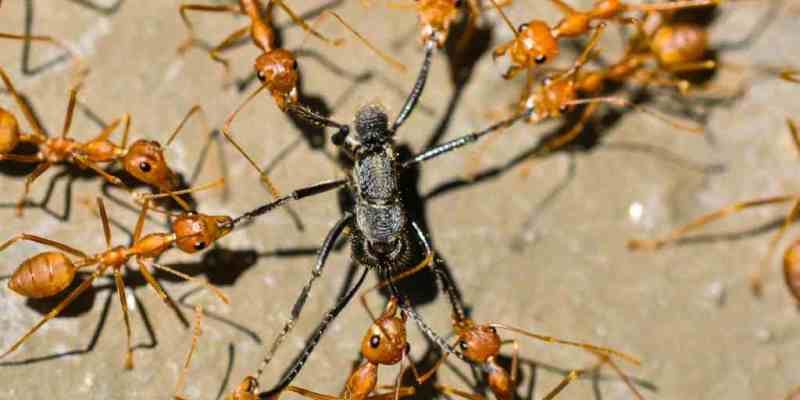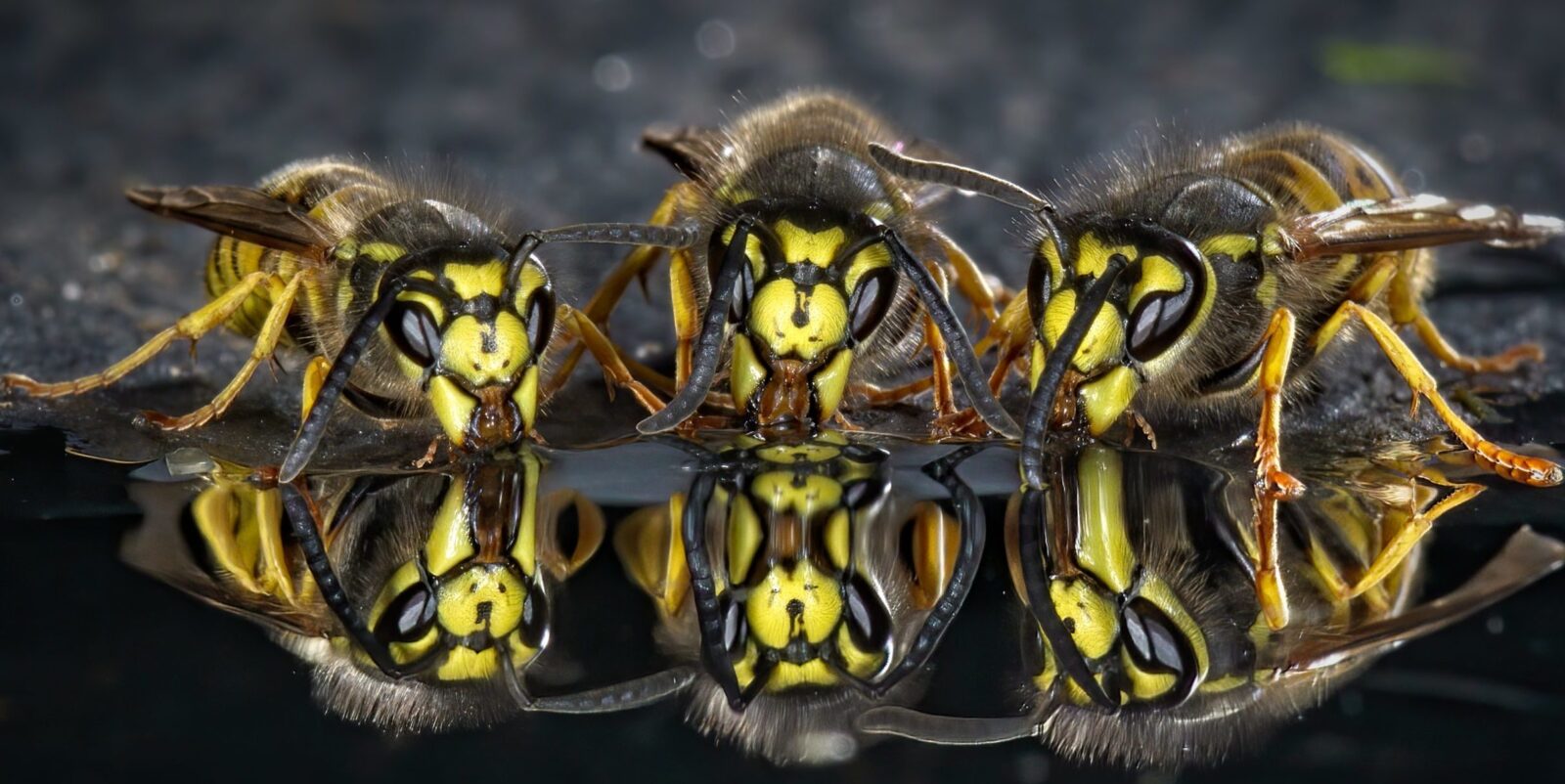
Ants, bees and wasps
This group is arguably the largest and most complex of all the orders of insects and they seem to be only distantly related to the other endopterygotes.
There is evidence that they are closer to the Panorpid groups rather than the Coleoptera but the picture is far from clear. Although their monophyly is not in doubt, it is hard to give defining characters for the whole group that are not plesiomorphic.
In the winged species the fore wings are larger than the hind ones, and the wings on each side are linked during flight by rows of hooks called hamuli; some authors consider this the origin of the word Hymenoptera, from the Greek god of marriage ‘Hymen’, referring to the ‘married’ wings, instead of ‘hymen’ meaning a membrane.
The larger and more conspicuous groups are often important pollinators of plants, and a few are pests in domestic settings, but the great majority of Hymenoptera belong in families little known except to the specialists.
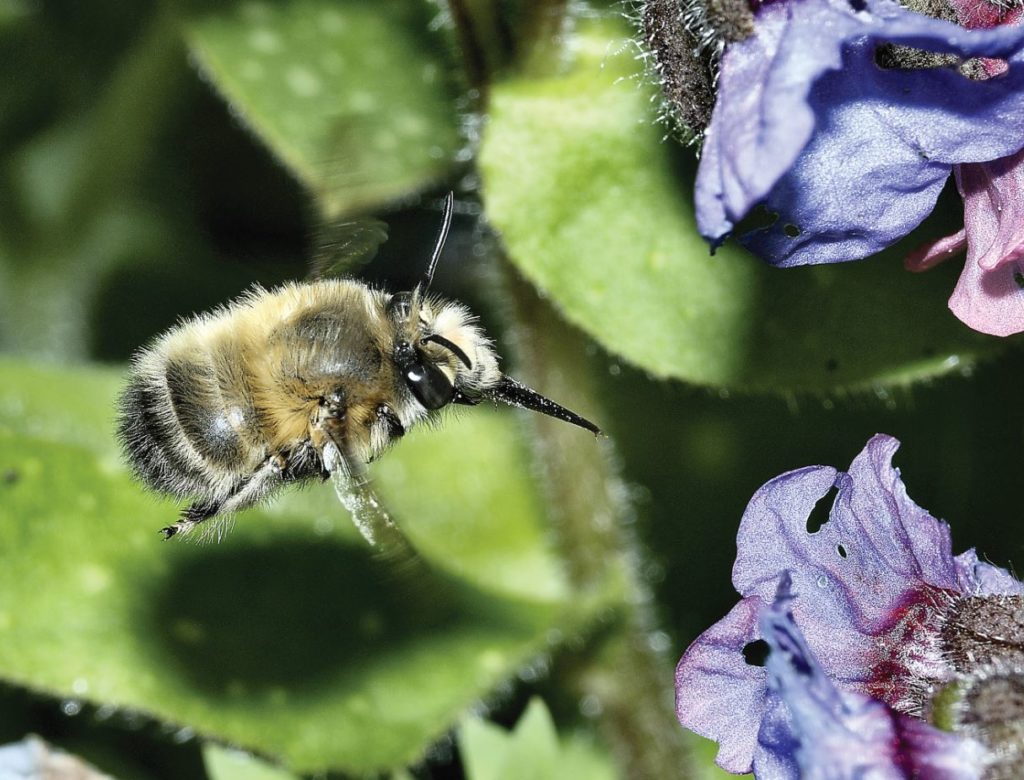
Anthophora plumipes Credit Robin Williams 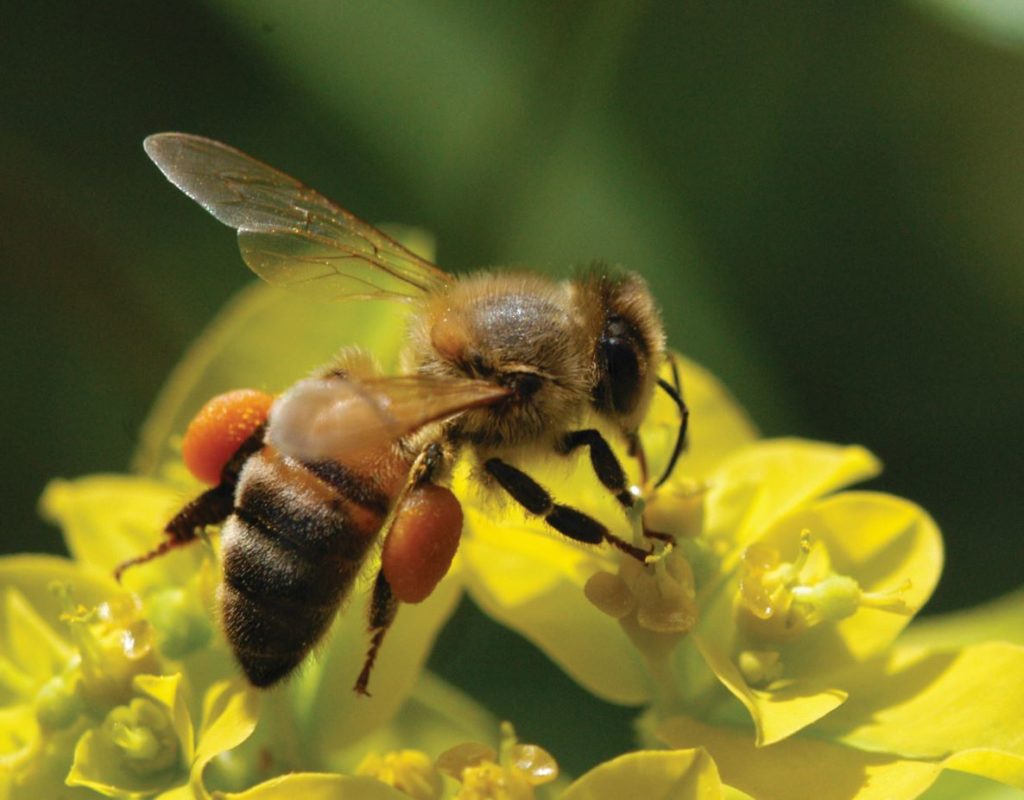
Apidae with pollen baskets Credit Peter Barnard 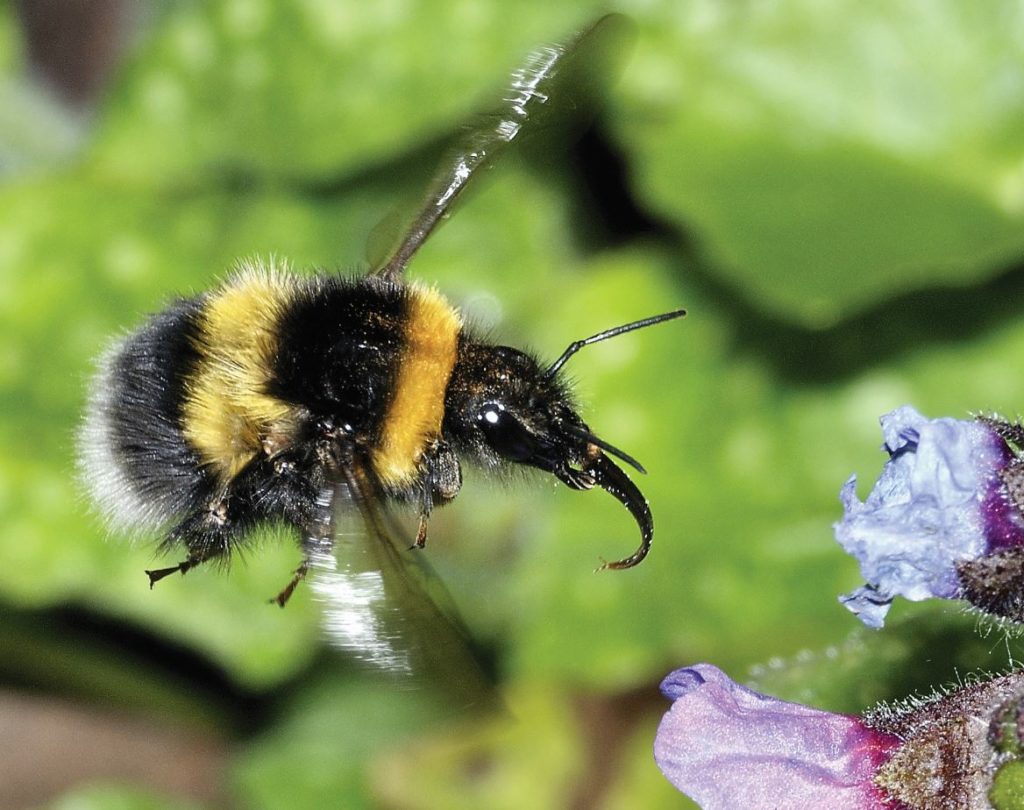
Bombus hortorum Credit Robin Williams 
Osmia rufa and nest Credit Robin Williams
Understanding the biology of the Hymenoptera depends on two major points, the method of sex determination, and the different kinds of parasitism; both of these have shaped the evolution of the order as a whole. All are haplodiploid, in that females develop from diploid (fertilised) eggs, while males develop from haploid (unfertilised) ones, though this method of controlling sex ratios is not confined to the Hymenoptera.
Although the group as a whole exhibits a wide range of life styles, from phytophagy to predation, the development of highly sophisticated types of parasitism has contributed enormously to the success of the group.
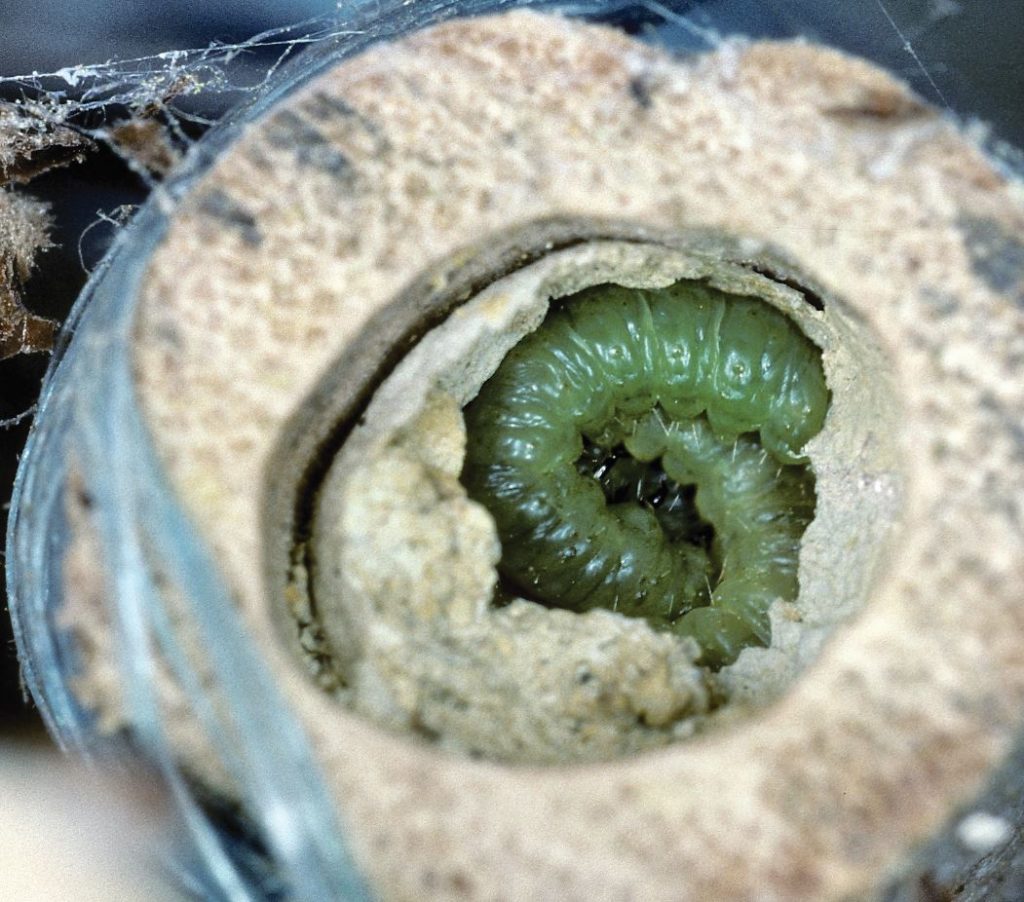
Ancistrocerus nigrocornis cell with prey Credit Robin Williams 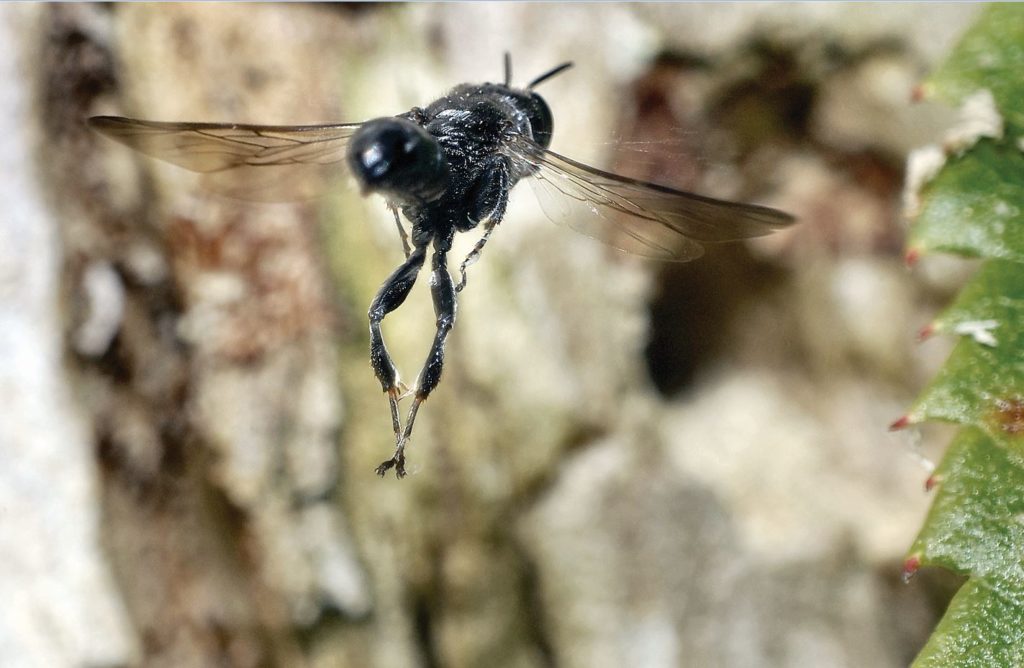
Crossocerus megacephalus Credit Robin Williams 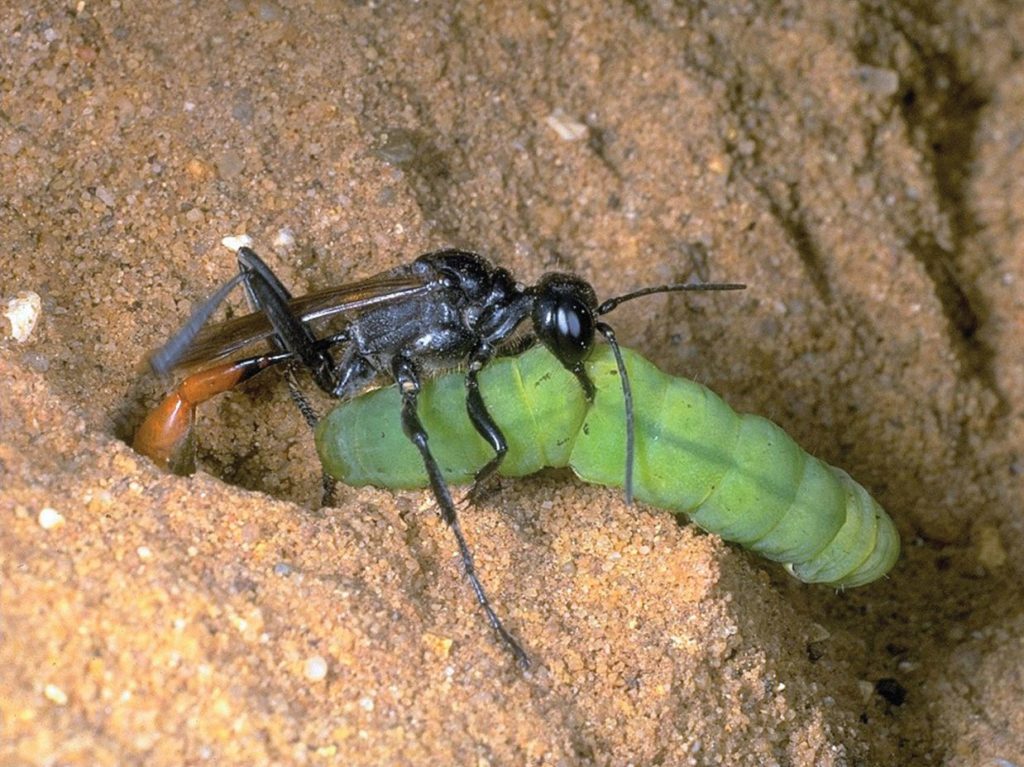
Ammophila sabulosa with caterpillar prey Credit Roger Key 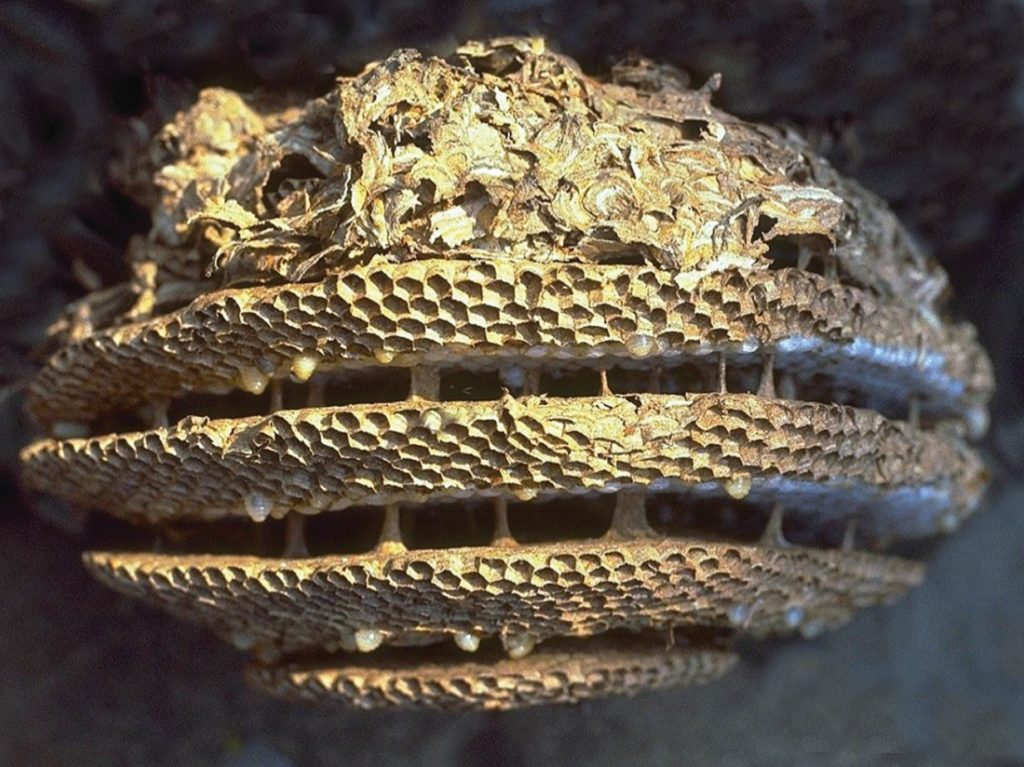
Vespula germanica nest shoring interior structure Credit Roger Key
Ants are among the most abundant organisms on Earth, with some estimates suggesting that there are over 10 quadrillion alive at any one time, mainly in tropical rain forests. Red wood ants are renowned for their defensive behaviour, attacking potential threats with a combination of biting and squirting formic acid from a specialized gland in their abdomen. Several bird species will groom by sitting on ant nests (especially those of wood ants), and allowing the ants to clamber over them, and it seems that the formic acid may kill some of the birds’ lice.

Lasius niger swarming Credit Roger Key 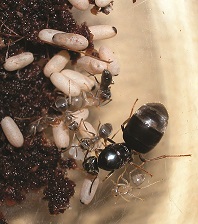
Lasius niger queen, workers and pupae Credit Peter Barnard
Many families of Hymenoptera are loosely termed parasitic wasps, but true parasites do not kill their hosts; most Hymenoptera are actually parasitoids, either internal or external, and they eventually kill the host, though not before they have finished their own development. Some are even hyperparasitoids, which attack a different parasitoid that is already feeding inside or on its host.
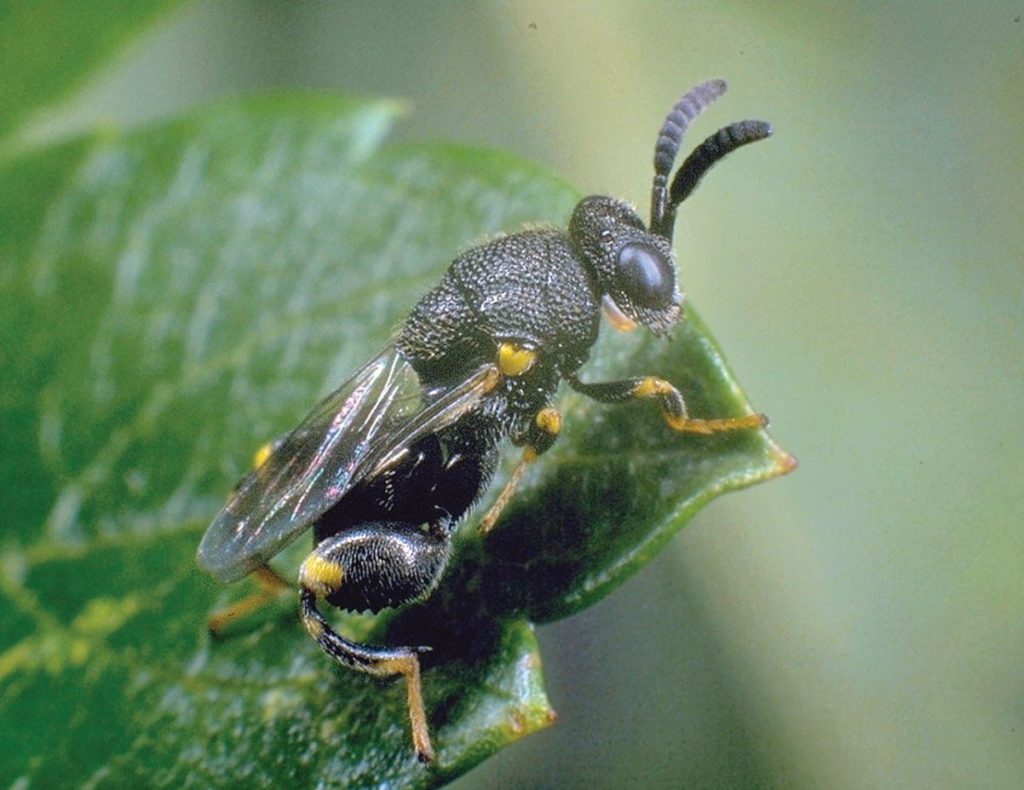
Brachymeria minuta Credit Roger Key 
Dinocampus coccinellae ex 7-spot ladybird Credit Roger Key 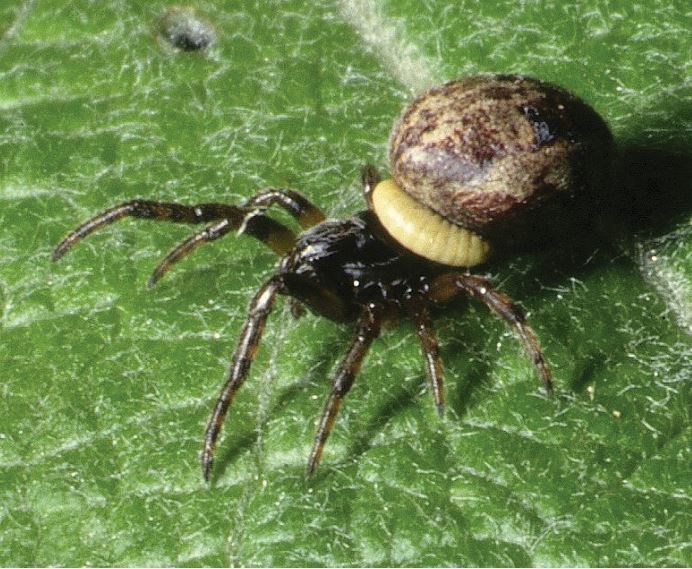
Polysphinctine larvae on spider Credit Roger Key 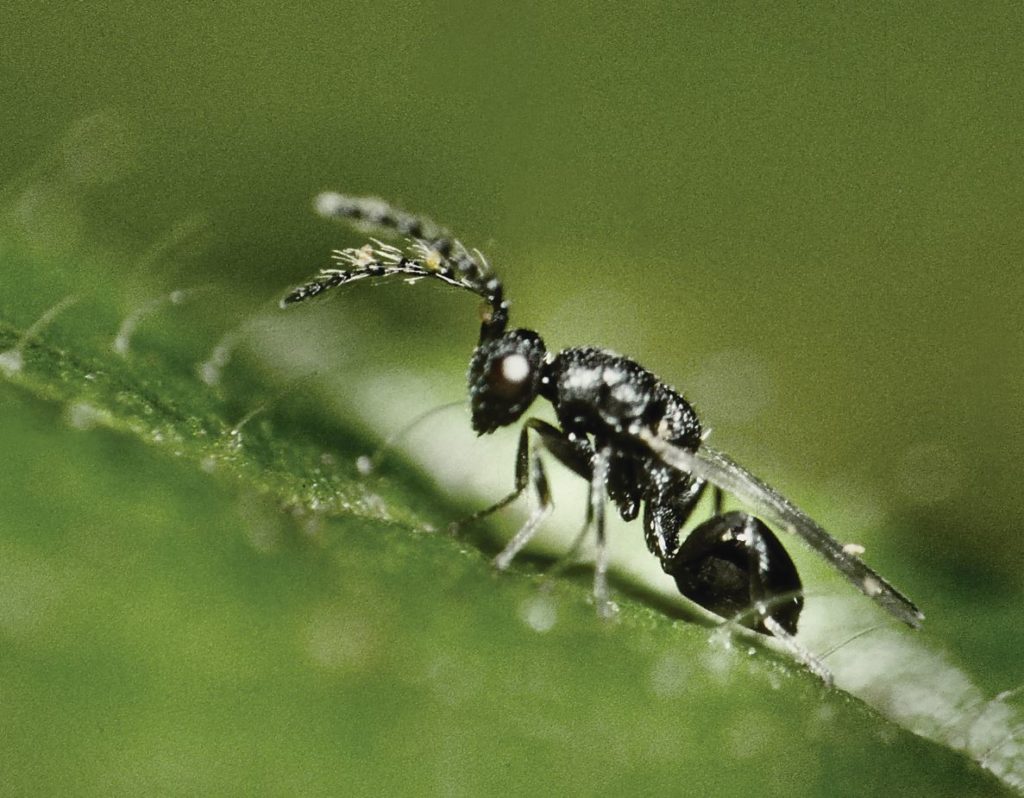
Eurytoma brunniventris ex knopper gall Credit Robin Williams
Within the aculeate Hymenoptera, the evolution of complex social behaviour has been another major influence on their success. Traditionally the Hymenoptera are divided into two main groups, the Symphyta (sawflies) and the Apocrita, which are in turn divided into the Aculeata (including the stinging and social groups) and the Parasitica (the largest section of the order). Only the Aculeata can be considered as monophyletic, and they are probably derived from some of the ‘Parasitica’ which means that the latter group is paraphyletic; the Symphyta are considered the most basal group of all and again cannot be monophyletic. Nonetheless these convenient groupings are retained for the time being, until a more robust phylogeny is uncovered.
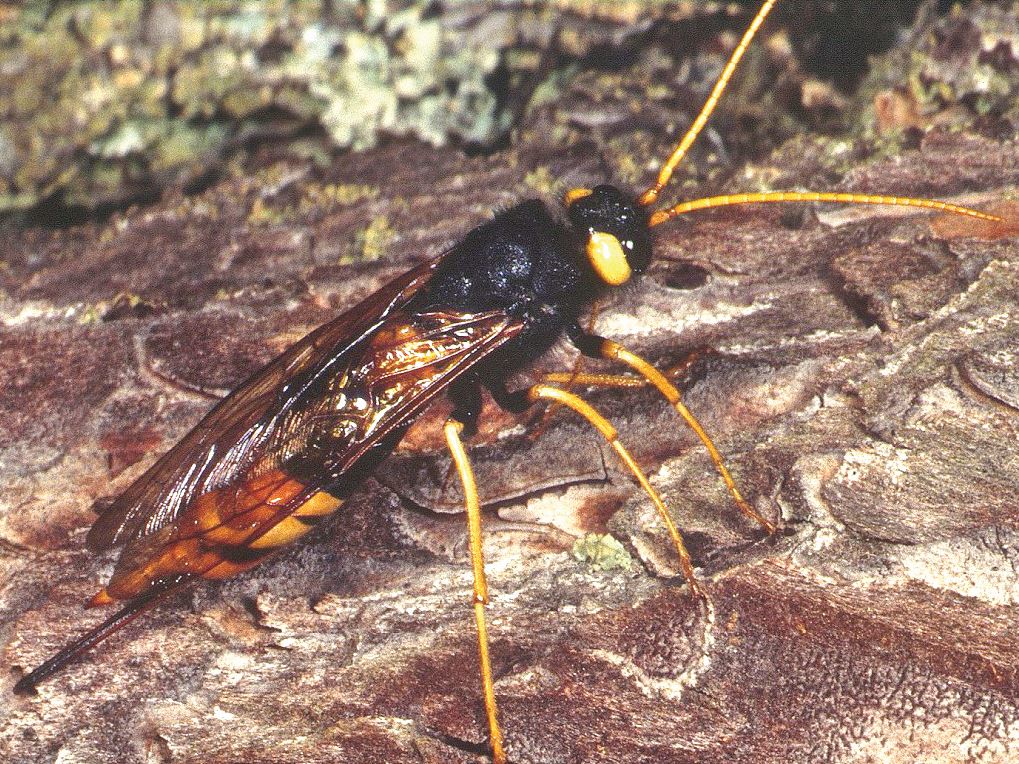
Uroceras gigas Credit Roger Key 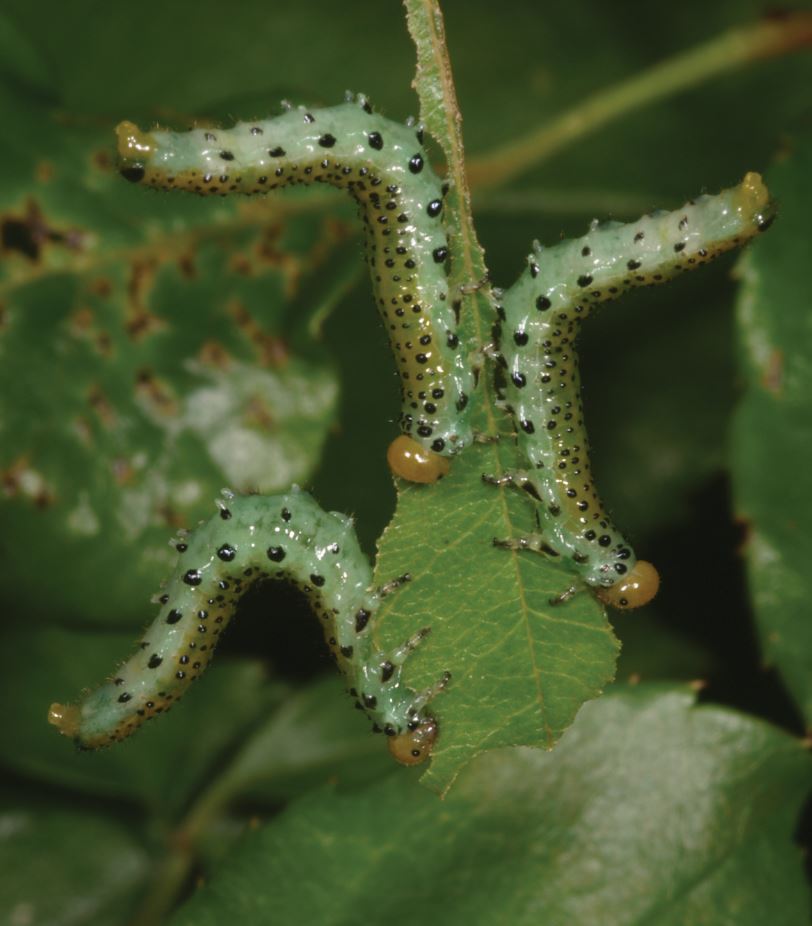
Arge ochropus larvae Credit Roger Key
Well-known groups of Hymenoptera include sawflies, parasitoid wasps, ants, bumblebees and social wasps.
Worldwide there are around 150,000 known species in 90 families; in Britain there are about 7,000 species in 57 families.
Identification help

